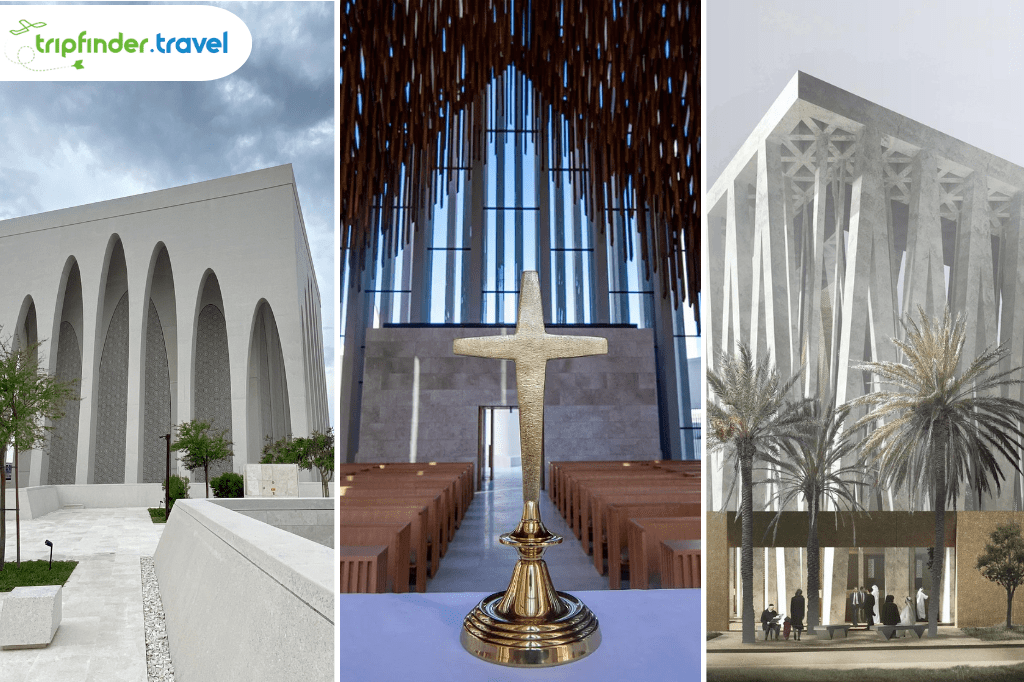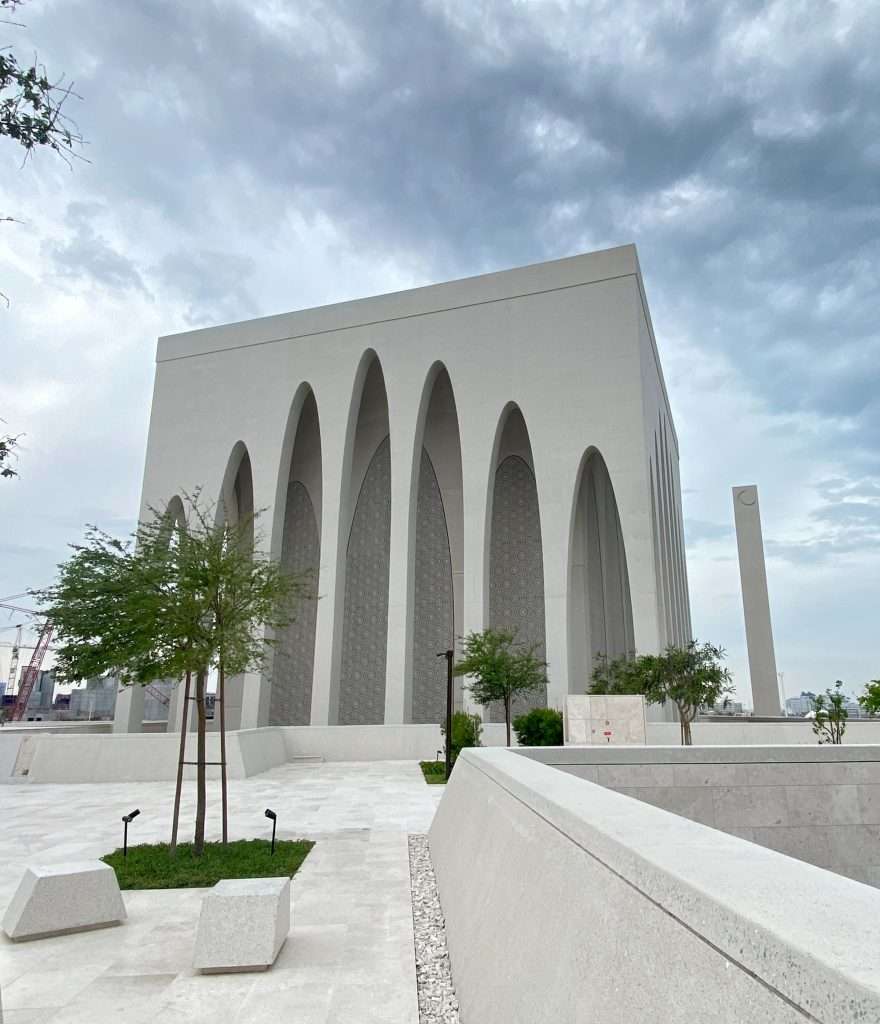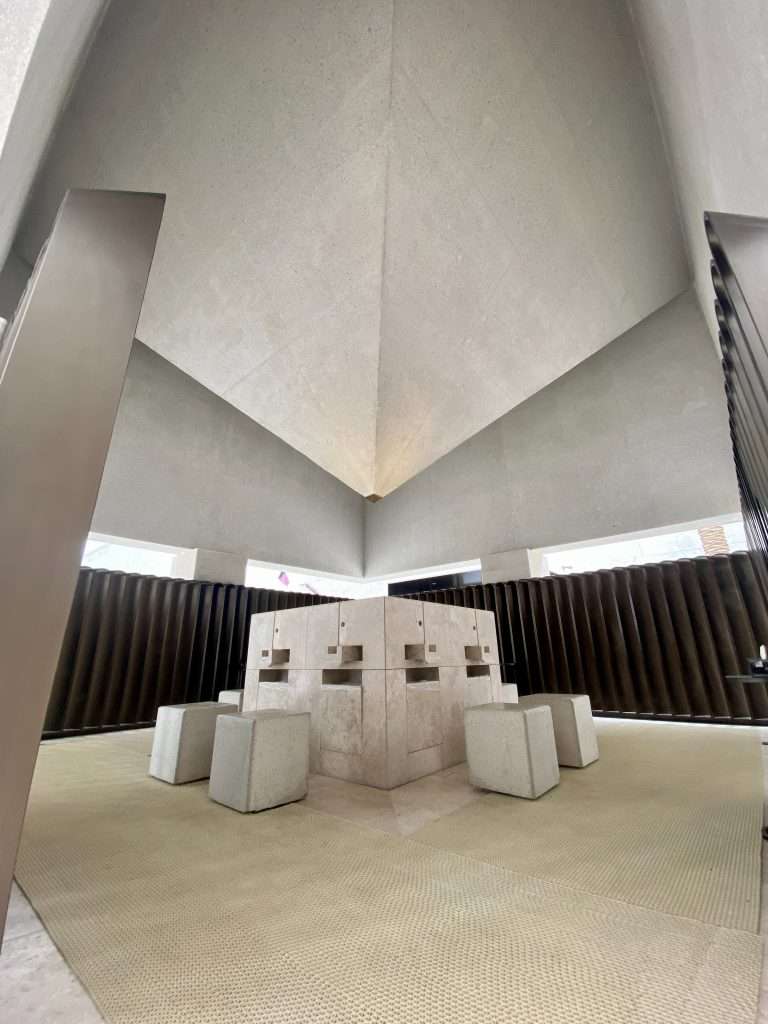THE ABRAHAMIC FAMILY HOUSE: A COMPLETE GUIDE

The Abrahamic Family House is a remarkable initiative located on Saadiyat Island in Abu Dhabi, designed to symbolise understanding, peaceful coexistence, and goodwill among people of all faiths. This visionary project includes the construction of a mosque, church, synagogue, and educational facility, all reflecting the shared principles of Judaism, Christianity, and Islam. It was inspired by the Document on Human Fraternity signed by Pope Francis and Grand Imam Ahmed Al-Tayeb in 2019. The Abrahamic Family House serves as a hub for education, worship, and dialogue, offering visitors the opportunity to experience various sacred ceremonies and gain insight into different religious services. The architectural design embodies the values of tolerance, inclusivity, and peace, and it is set to be completed in 2023. The House also hosts guided tours, welcomes worshippers from all backgrounds, and provides a rich programme of educational activities, making it a symbol of unity and coexistence in the UAE.
About the Abrahamic Family House
The Abrahamic Family House is intended as a symbol of understanding, peaceful cohabitation, and goodwill among people of all faiths. The project calls for the construction of a mosque, church, synagogue, and educational facility on Saadiyat Island, Abu Dhabi’s cultural hub. Its aesthetic embraces the shared principles of Judaism, Christianity, and Islam and offers a strong foundation for fostering mutual respect and tolerance among people of good intent. Following the signing of the Document on Human Fraternity by Pope Francis and Grand Imam Ahmed Al-Tayeb in February 2019, the idea for the Abrahamic Family House emerged. This iconic building will be a hub for education, discussion, and worship that is accessible to all and a real representation of the UAE’s commitment to hospitality and tolerance. Visitors will have the chance to experience sacred ceremonies, hear from holy scripture, and learn about religious services within each of the places of worship. Unrelated to any particular faith, a fourth area will be a place of learning where all people can come together as a single community dedicated to understanding and peace. A range of programming and activities, including daily religious services and world summits, will be held at the Abrahamic Family House. The project, which is now under development, is scheduled to be finished in 2023 and will be one of numerous initiatives that the Higher Committee of Human Fraternity will provide guidance on.
About The Architectural Design
A world of tolerance, openness, and ongoing progress should be reflected in architecture. Architecture and landscape design can interpret a location’s principles and structure to advance the conversation, reevaluate preconceived notions of the world, and more deeply understand what a place might contribute. The design strives to uncover a contemporary spirit that pulls from heritage but looks towards the future—a future marked by acceptance, inclusivity, and peace. It also intends to truly represent and serve different communities of worshippers, residents, and tourists. In order to ground the three monumental places of worship with an exterior visual harmony and preserve their essential formal originality, the design aims to create a common language amongst them. On the podium, three cubic volumes of the same size are joined in size and materiality. No one of the three buildings is more dominant than the others, despite the fact that they all have the same external dimensions and a coordinating roof at the same datum height.
What’s inside the Abrahamic Family House?
Imam Al-Tayeb Mosque
The mosque of the Abrahamic Family House complex is named after the Grand Imam of Al-Azhar, Ahmed Mohamed Ahmed El-Tayeb, and has seven arches on its facade as a nod to the significance of the number seven in Islam.
Mashrabiya panels with a complex geometric pattern wrap around the mosque’s exterior. The mosque’s latticework provides seclusion for individuals who are worshipping there while also allowing air to pass through and keeping the structure cool. Although the patterns are entirely formed of triangles, light travelling through the mashrabiya shows on the floor inside as circles. The patterns help conceal the air conditioning equipment.
St. Francis Church
The church is oriented eastward, towards the rising sun, as a nod to the idea that light is a sign of divinity. The church is named after St. Francis of Assisi, a monk who lived in extreme poverty in the 13th century.
Two different-length columns over the entranceway of the church serve as a visual representation of Jesus’ incarnation and resurrection as you enter. The timber battens that cover the interior vaulting of St. Francis Church are designed to resemble light rays by taking inspiration from the altar at St. Peter’s Basilica in Rome.
Moses Ben Maimon Synagogue
The crisscross façade of the Moses Ben Maimon Synagogue, which bears the name of the Jewish philosopher from the 12th century, makes it easy to identify. The outside gives cover from the sun while allowing visibility of the stars at night. It is intended to imitate the palm trees used to construct a Sukkah, which is used during the Festival of Shelter. The bronze chainmail that hangs from the synagogue’s roof once more alludes to the Sukkah.
Abrahamic Family House tours with a guide
Even though we’ve only provided a quick introduction to each place of worship, the best way to learn about all of the incredibly significant architectural and design features is to take a guided tour with a subject matter expert. The trips, which are offered in both Arabic and English and last about an hour, are available from Tuesday through Sunday from 10 a.m. to 5 p.m.
Visiting as a worshipper
Every day, worshippers are welcome within the Abrahamic Family House. You won’t need to make a reservation for your visit, but you will need to use the church, mosque, or synagogue’s designated entrance.
Make a visit plan.
Visitors are invited to the Abrahamic Family House, which provides a variety of activities, including guided tours and interactive explorations of understanding and cohabitation.
Visitors are welcome to explore all three places of worship and learn about the core beliefs of each religion. All tourists must reserve their tickets in advance in order to enter the Abrahamic Family House.
Don’t forget to stop by the forum. In addition to being a location to participate in seminars, conversations, and other educational events, it is a special setting for sharing, celebrating, and connecting.
A spot for learning
The Abrahamic Family House offers a comprehensive programme of intellectual and educational activities created in collaboration with eminent academic institutions, universities, and interfaith leaders from all over the world. Through these programmes, the Abrahamic Family House offers a secure environment for people of different religious backgrounds to explore challenges and gain a greater understanding.
Frequently Asked Questions
No, entry to the religious place is entirely free.
Abrahamic Family House welcomes guests from all backgrounds and creeds. Worshippers should enter at the entrance designated for their place of worship rather than reserving tickets. You are welcome to come as a guest and participate in the worship of another religion.
Yes. Tuesday through Saturday, 10 a.m. to 5 p.m., are the hours for tours. They can be scheduled in either English or Arabic and last for around an hour.
Currently, you can schedule a tour at abrahamicfamilyhouse.ae.
The Abrahamic Family House’s amenities are accessible to worshippers every day. The Imam Al-Tayeb Mosque is open in accordance with Abu Dhabi’s Awqaf prayer hours, but St. Francis Church and Moses Ben Maimon Synagogue are both open from 7 a.m. to 9 p.m.
Yes.
Wearing clothes that cover the area of the body between the neck, elbows, and ankles is required for all guests. Additionally, you should refrain from dressing too tightly.
Both the mosque and the synagogue compel women to cover their heads. You can borrow a scarf from the Welcome Centre Reception Desk if you aren’t carrying one.
Public bus route 94 will take you there and drop you off at Gate B.
Or by car:
From Abu Dhabi City, take the Corniche towards Mina Port and then follow the signs to Saadiyat Island’s Cultural District.
Take the Saadiyat Island/Yas Island exit onto Sheikh Khalifa Highway E12 from Dubai or Yas Island, then follow Yas Highway to the Cultural District on Saadiyat Island.
Yes. If you go to worship, you can practice your religion in the appropriate house of worship.
Attending a service, a gathering for prayer, or a community event can help you achieve this.
Worshippers are not required to purchase tickets, but as a courtesy, they are asked to enter the venue through designated entrances.
Open from Tuesday through Sunday from 10 a.m. to 5 p.m. for visitors; varied hours for worshipers. Abrahamic Family House, Saadiyat Island, Abu Dhabi (02 657 5900), Jacques Chirac St.


